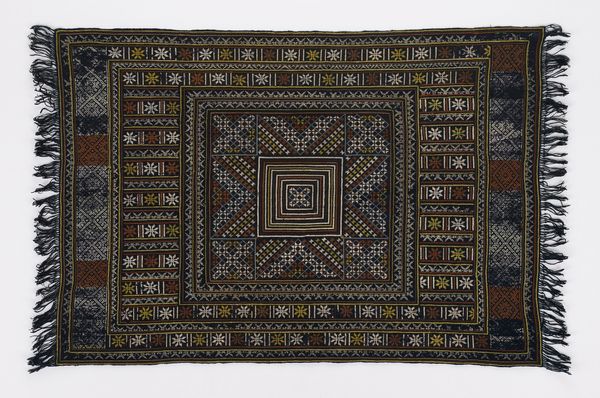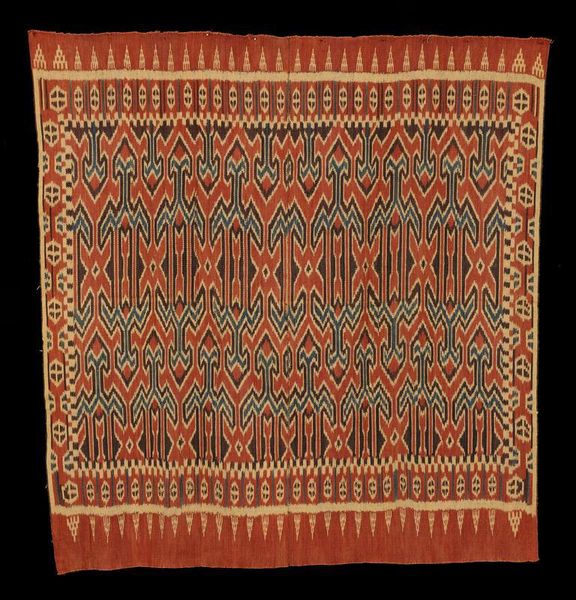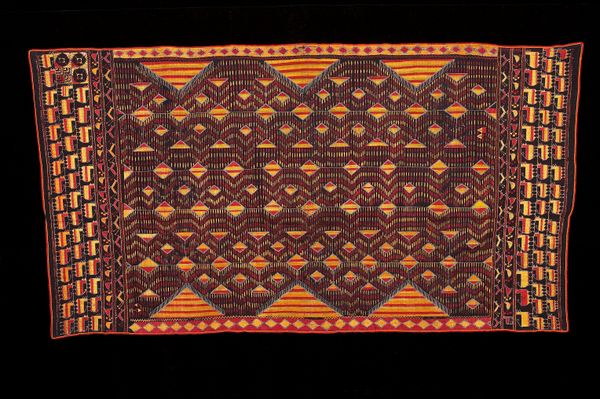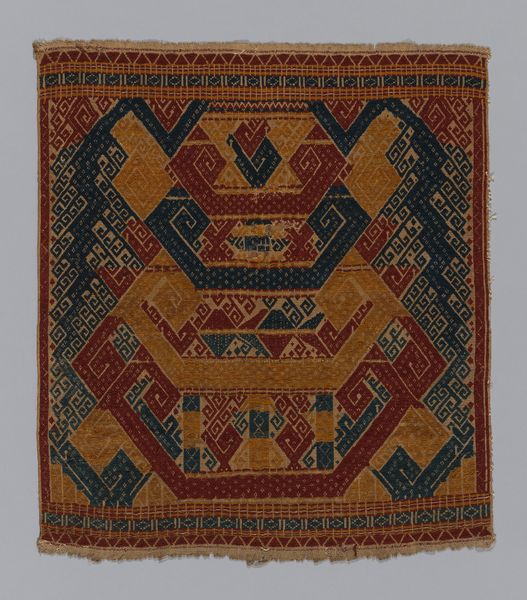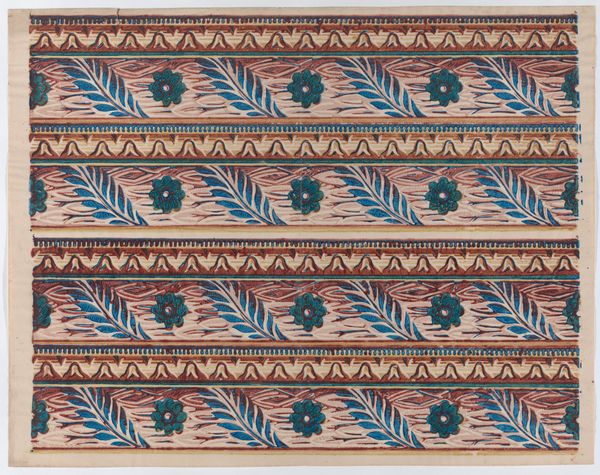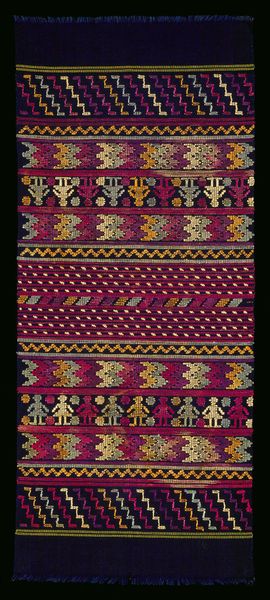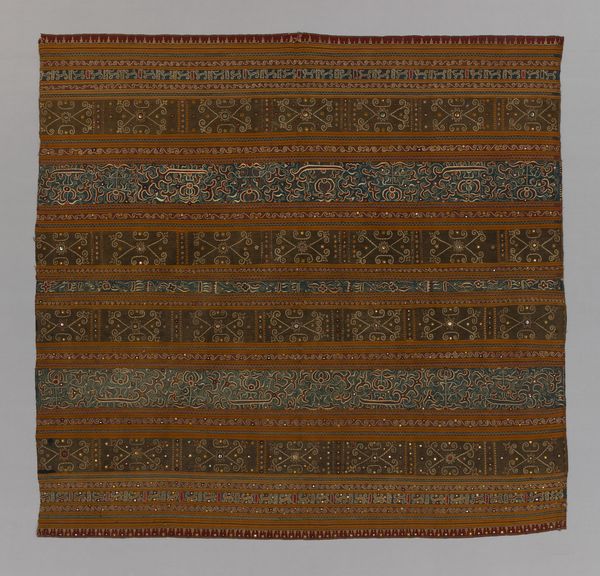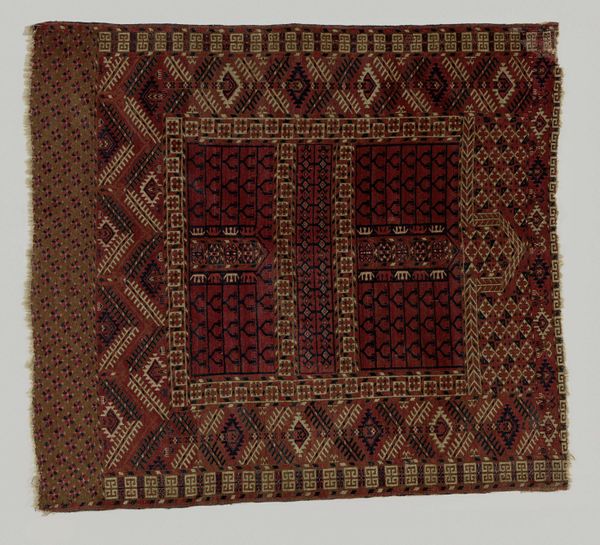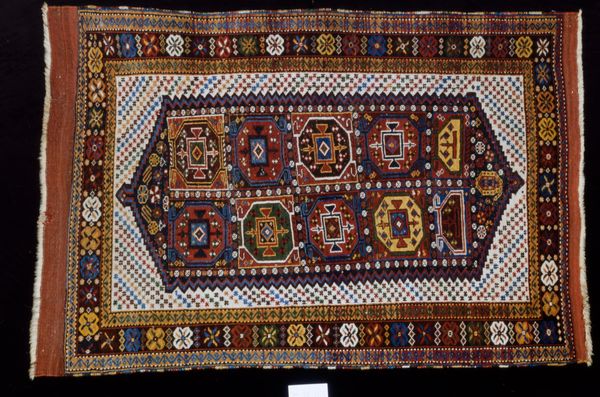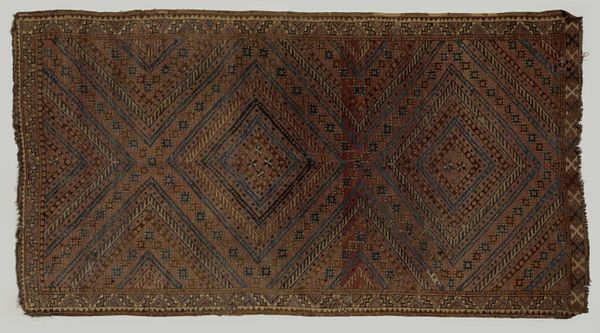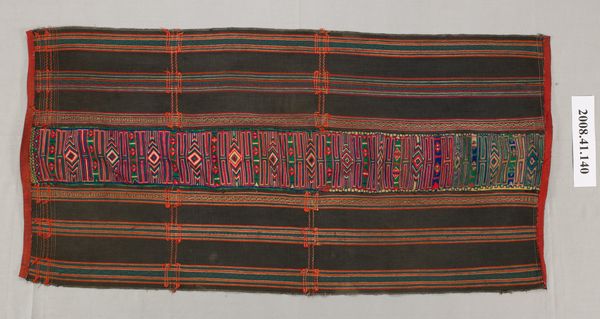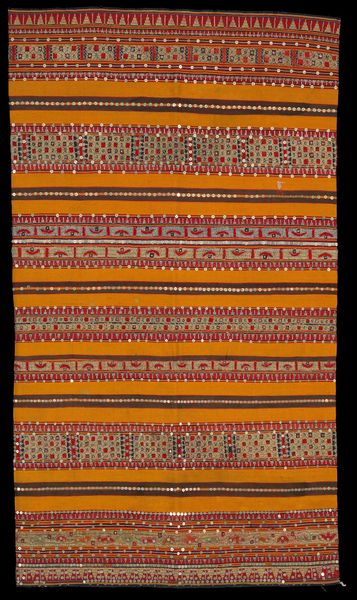
fibre-art, weaving, textile
#
natural stone pattern
#
fibre-art
#
weaving
#
textile
#
fashion and textile design
#
repetitive shape and pattern
#
geometric
#
fabric design
#
repetition of pattern
#
regular pattern
#
pattern repetition
#
textile design
#
imprinted textile
#
layered pattern
#
indigenous-americas
Dimensions: 18 1/4 × 43 1/8 in. (46.36 × 109.54 cm)
Copyright: Public Domain
Editor: We're looking at a Serape, created around 1900, possibly in Saltillo. It's textile art, woven from cotton and pigments, now held at the Minneapolis Institute of Art. The intricate patterns are really striking! How should we interpret its visual impact? Curator: What jumps out to me is how the materiality speaks to its social context. Consider the labour involved in producing such a textile. The sourcing of the cotton, the preparation and application of the dyes – probably natural pigments at this time – the weaving itself. These were skilled processes, often deeply embedded in Indigenous economies and family structures. Editor: So, the value isn't just in the final product but in understanding its production? Curator: Exactly. We need to think beyond aesthetic appreciation to consider the conditions of its making. What tools were used? Were these local or imported? What trade networks supported the availability of these materials? And how did the production and distribution of serapes intersect with colonial power dynamics at the turn of the century? These objects existed as expressions of indigeneity within an increasingly industrialized world. Editor: It makes you think differently about how an object carries its history! What about the pattern, would that speak to cultural influences of the time? Curator: Certainly! The geometric designs aren't just decorative; they likely carry cultural meanings specific to their makers, modified or impacted through material availability. Thinking materialistically urges us to remember these patterns as being generated, maintained, and passed down through real individuals involved in acts of labour. Editor: That’s fascinating; I had never considered how deeply labour and materiality influence how we perceive cultural value. Thank you. Curator: My pleasure. Recognizing art’s grounding in real-world conditions offers new lenses to see culture anew!
Comments
No comments
Be the first to comment and join the conversation on the ultimate creative platform.
